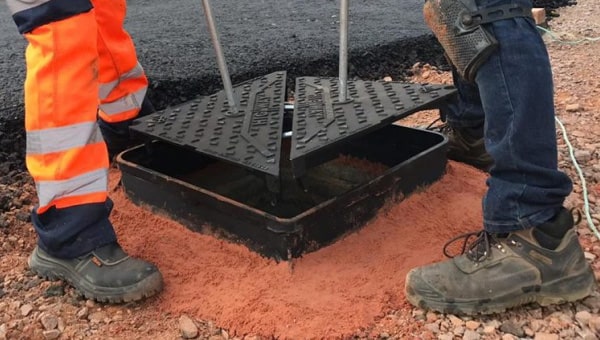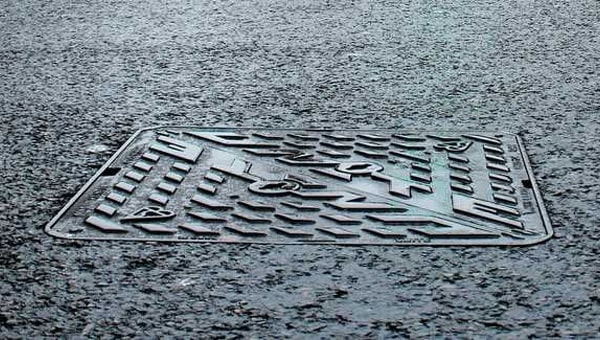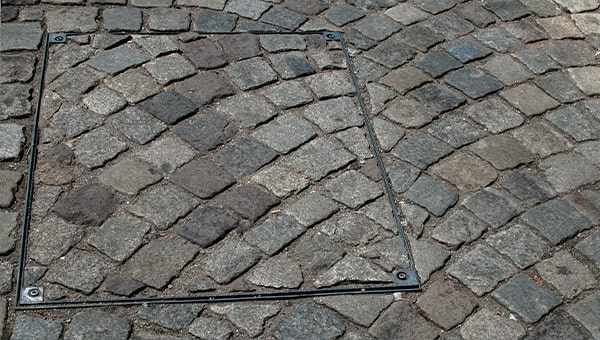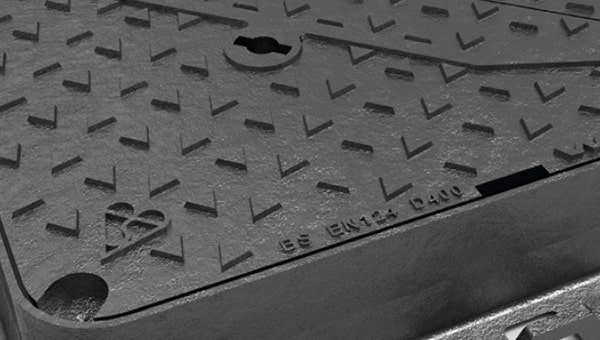Manhole and access covers are manufactured in various shapes, sizes and materials to suit every need, but there's a lot of confusing jargon surrounding their weight baring classifications. What is the difference between the British Standard (BS EN) and the Fabricated Access Covers Trade Association (FACTA) classifications? The answer to these questions can be found in steel.
First up: manhole cover or access cover — not sure which one is which? Check out our what's the difference between manhole covers and access covers article to get the low-down. This article will use "covers" to mean either manhole or access covers.
Why do covers have different loading applications?
Covers are graded by the weight they are designed to withstand after installation. The intent of loading classifications is to offer guidance on which type of cover is best suited to the application. For example, a cover designed for use in a pedestrian foot-traffic area would not be suitable for installation in a road, due to the vast difference between the weight of person and that of a vehicle.
For this reason, the loading application should be the first thing you look for when purchasing a cover. For reasons of suitability and safety, it is crucial that you select the right cover for the job.
However, this is easier said than done if you're unsure what the different classifications mean; let’s take a look at the two most common classification standards you will see for covers in the UK; BS EN 124 and FACTA.
What's the difference between between BS EN 124 & FACTA?
The main difference between these two standards are the calculations of load classifications. BS EN 124 calculates the dynamic vehicle loading for fast moving traffic, to ensure that it rates all material types against the highest possible installation requirements. FACTA focuses their calculations on fabricated covers which are normally restricted to use in 20mph speed limit areas (and therefore not subject to the same dynamic loads that cast iron covers are).
| FACTA Class | FACTA Ultimate Test Load | BS EN 124 Equivalent | BS EN 124 Ultimate Test Load |
|---|---|---|---|
| FACTA A | 8kN | A15 | 15kN |
| FACTA AA | 31kN | N/A | N/A |
| FACTA AAA | 52kN | N/A | N/A |
| FACTA B | 101kN | B125 | 125kN |
| FACTA C | 132kN | C250 | 250kN |
| FACTA D | 220kN | D400 | 400kN |
| FACTA E | 320kN | E600 | 600kN |
| FACTA F | 480kN | F900 | 900kN |
This rough parallel is for guidance only and indicative of typical areas of applications for each class, and is not intended to be a like-for-like comparison of BS EN 124 and FACTA classifications.
BS EN 124 and FACTA classifications cannot be directly compared with each other. As an example, FACTA B class covers are rated suitable for use in car parks (for pneumatic wheel loads), with an ultimate test load of 101kN. The lowest rating for car park use under BS EN 124 is B125 (with an ultimate test load of 125kN). For a fabricated cover to pass a BS EN 124 load test it would require additional material which, given the low speed and intensity of traffic in a car park, is deemed unnecessary by FACTA.
What does this mean for choosing a cover?
The usefulness of each standard largely depends on the install location of the cover and therefore the required material.
If you're installing a cover in a pedestrian area, where you want it to blend in with flooring, then you’ll probably want a fabricated recessed cover. For this purpose, a cover with a FACTA rating would be suitable. If, however, you need a cover to be installed in a highly trafficked road (where the speed limit is above 20mph) then you most definitely want a cast/ductile iron cover rated suitable under the BS EN 124 standard.
It's important to recognise that if a BS EN 124 or FACTA cover has already specified that you do not swap it for a cover of the opposing classification.
The key thing to remember is that there are two classifications of covers, and each have their own uses in applications, and which cover is best for each application. if you're unsure which standard you need speak to an expert at JDP for project advice. If in doubt, always go for a higher loading than you think you'll need, as it's far better to over-estimate than under-estimate — ain't nobody got time for digging up and replacing a broken cover!
Find out more about the BS EN 124 standard or more about the FACTA classifications in our other manhole covers articles.






